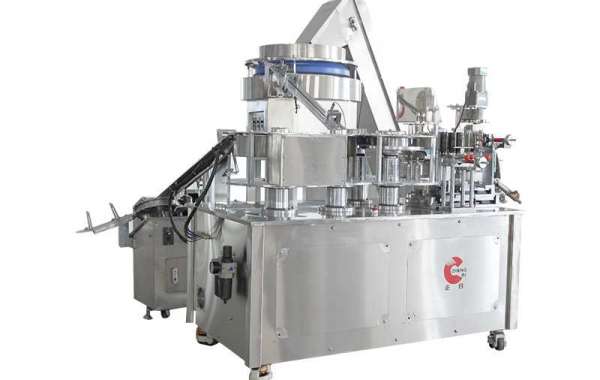Most manufacturers offer standard vertical machines in one through four or six-color configurations. Multicolor open systems can have multiple cliches, or one cliche in a split inkwell. Independently adjustable cliches are more desirable than having all of the colors on a single cliche. The benefit of independent cliches is simply the ability to more easily absorb potential image-to-image and/or image-to-part-location problems.
Multicolor closed systems for Syringe Pad Printing Machine can also have single or multiple cliches. A few manufacturers offer small (60-mm) multicolor ink cups, commonly referred to as split ink cups, that allow you to print two or three colors. The limitation is that the colors must be side by side, unless your machine can pick up once and then stroke the print two or three times. In that instance, you can shuttle the part to print colors on top of one another. The other limitation is that split ink cups are difficult to manufacture, and thus are expensive.
Indexers
The four types of indexers are pneumatic, electronic, stepper-motor driven, and manual. Pneumatic indexers are less expensive and more popular than the other automated shuttle systems. Pneumatic indexers can have multiple positions by means of either multiple cylinders or a single, more expensive cylinder equipped with magnetic brakes. Be very careful to avoid any fluctuation to air pressure when working with parts of a critical nature on pneumatic indexers.
Electronic indexers have programmable, servo-driven motors. These indexers are more expensive than their pneumatic counterparts and are somewhat hard to find. Stepper-motor-driven shuttles can be programmed to travel a desired number of steps between prints. Stepper-motor and electronic indexers will typically last longer than pneumatic indexers. Manual indexers are used for low-volume jobs where the registration of colors is not critical.
Rotary tables
Rotary tables for parts placement can also be electronic, stepper-motor driven, or pneumatic. Accuracy and price are determining factors. Electronic and stepper-motor-driven rotary tables are more expensive than pneumatic ones, but they can move weight more accurately. Rotary tables can be of just about any reasonable diameter, allowing anywhere from two to 12 or more fixtures to be attached.
Some manufacturers have modular rotary systems with up to four independently adjustable machine-mounting stations. Depending on the application, one, two, three, or all four machines can be used simultaneously, turned off individually, and even rotated 180º on their mounts to operate alone. This allows more than one job to run at the same time.
Hot-air dryers
Hot-air dryers are common on racetrack conveyors and rotary tables. Even though most pad-printing inks dry to the touch within a few minutes, most people prefer to have the additional drying equipment, especially if they are using two-component ink or printing multiple colors with a lot of coverage, or at high speeds.
Racetrack conveyors
Racetrack conveyors are standard equipment on many multicolor machines. Racetracks are pneumatically driven in most cases and can have several nests or fixtures. If necessary, cams can be attached to allow the nests to rotate in between stations for printing multiple sides on a given part. These systems are rarely used outside of the pad-printing industry.
Walking beams
Walking beams are a mechanical means of moving parts from one print station to another. Walking beams are limited in that they usually require that the part be picked up, moved over, and located against a stop of some sort for each printing operation. In most multicolor operations, it is not recommended that the part be moved in this fashion.
over-under conveyor
Over-under conveyors are usually chain driven or precision-link mechanically driven. In most cases, parts simply fall off the nests into a container at the end of the line, or are transferred to separate conveyors for subsequent operations.
A few manufacturers use the bottom of under-over conveyors for secondary operations. One in particular has under-over conveyors that present the part at a 30º angle after printing, rather than upside-down. This allows for easier access for post-print operations such as assembly.
Air blasts
Automated closed-cup machines can have thinner-metering systems added to continuously add thinner to the ink cup. These systems simply drip a predetermined amount of solvent into the top of the ink cup at regular intervals. Unless the ink cup has some feature that allows the thinner to be mixed into the ink, the thinner just sits on top of the ink, having very little effect on viscosity.
If you want to buy Syringe Production Line , welcome to contact us!








